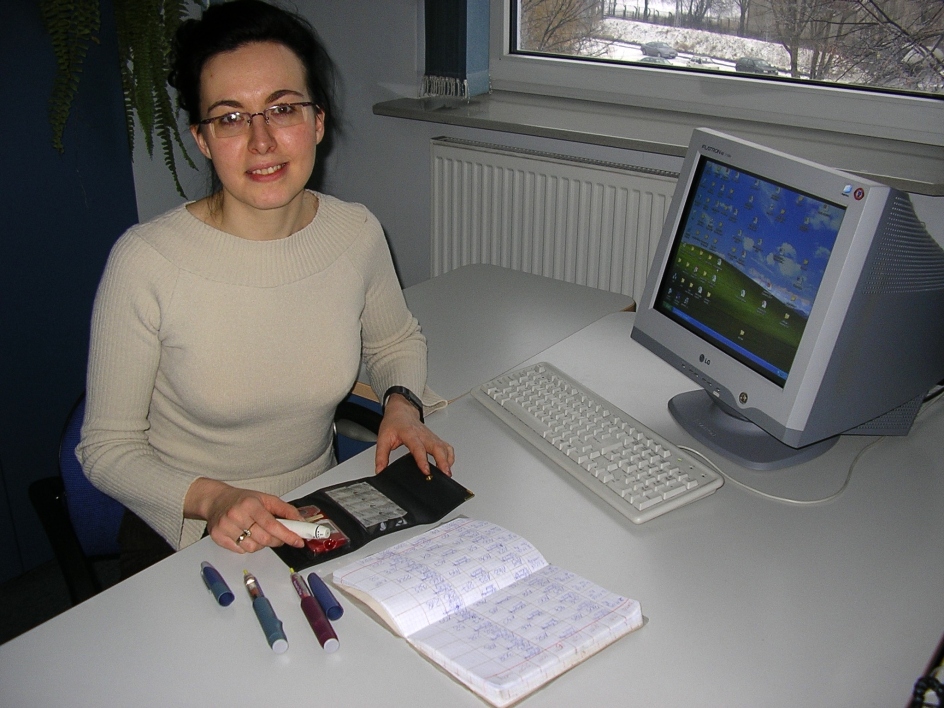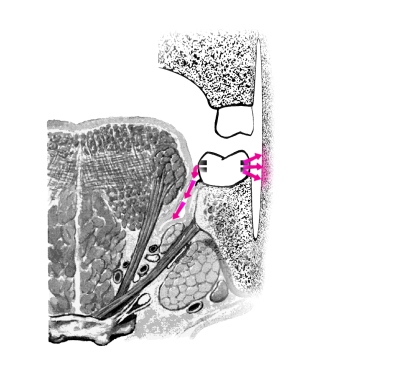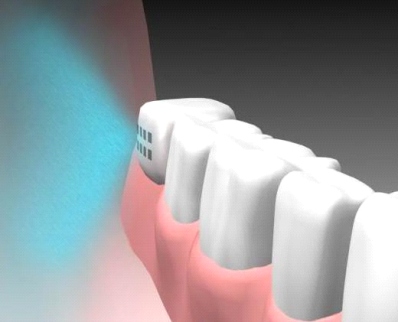Newsletter




1st Annual Newsletter
Dear Sir or Madame,
It is my pleasure to present the First Annual Newsletter concerning the IntelliDrug project -
the project which addresses the need of new, less invasive and more controlled drug delivery.
The outcome of IntelliDrug is an intra-oral device, which will provide new therapeutic
opportunities for people suffering from chronic diseases and drug addiction.
The application of the new drug delivery method will plump the socio-economic costs related to chronic diseases and addiction, in benefit of the entire society. I believe that the effort invested by our team will lead to improvement of not only the health status of the afflicted persons, but also of their quality of life.
I hope this newsletter will provide a helpful insight to drug delivery problems and possible solutions. I'd like to take this opportunity to wish you all Season's Greetings and a very Happy New Year.
Andy Wolff, DMDAssuta Medical Centers, Israel
Content of the newsletter:
page 1: Few words from the project co-cordinatorpage 2: A solution to the problem of compliance with addiction treatmentpage 3: A daily routine of a person suffering from diabetespage 5: Basic information about IntelliDrugpage 9: Some technical aspects of the IntelliDrug research workpage 10: Interview with Dr. Boýena Wójciñska and Dr. Józef Iskra, diabetes experts
Released: December 2004
A solution to the problem of compliance with addiction
treatment
The occurrence of drug addiction is a great problem in every European country. According to the European Monitoring Centre for Drugs and Drug Addiction (EMCDDA) in some countries a very high level of expansion is observed, e.g. in Portugal in the age group above 16 from 6 to 9 people out of 1000 suffer from drug addiction. The matter is a multidimensional problem, resulting not only in economical costs, but also impacts health, social and legal/criminal areas. The costs are difficult to measure, but certainly are huge. It is also true that drug addiction, despite its protracted and relapsing character, can be cured. Such treatment is however a lengthy and complex process and one of its basic elements is pharmaceutical treatment. Unfortunately, its efficiency is based on the level of adherence to it, a challenge that is very difficult to obey by the drug addicted person. Inevitably, normal life activities are affected.
How can these difficulties be overcome? What actions must be undertaken to achieve "a substantial increase in the number of the cured drug addicts", an aim set by the European Union agenda? How can we help drug addicted persons in their hard battle?
Let us put ourselves for a moment in the shoes of a drug addict and assume that this person has decided to start treatment and will do anything in his power to solve his/her problem. In addition to the motivation to quit drugs, also strong will is necessary to adhere regularly to rehabilitation treatment. Certainly every reader happened to be sick one time and had to take medicines. We all know that taking medicines on a regular basis is the key for effective treatment outcome. Do we succeed in taking medicines always at the right time? Surely sometimes we forgot about it or assumed that there is no need to "stuff ourselves with medicines", since we feel well enough. Unfortunately, it appears that regularity is quite problematic in every treatment. If so, imagine to what extent this problem might grow in case of a person addicted to drugs, which needs to overcome drug craving and also normalise his life style - in other words, constantly control himself. Unfortunately, taking anti-drug pills on an unsystematic basis or stopping it is one of the most common reasons of treatment failures.
Are there any additional barriers that hinder treatment compliance? Maybe the necessity of traveling to other (sometimes quite far away) places in order to obtain the medicine? Or maybe the high frequency of these visits? Or maybe the possibility of being recognised?
The IntelliDrug method will provide a solution to these challenges, as it will remove all these
barriers posed now in the rehabilitation path of drug addicts by placing the device with the
medication inside his/her oral cavity for several weeks, and then refilling it for further use.
The direct saving to society will be enormous: the number of patients each clinic can handle will increase at least by about 7 times fold (one weekly visit or less vs. one daily visit)! Medication received will only be consumed, not traded or dumped. Discretion issues, such as being seen while visiting the rehabilitation centre, will be dramatically reduced.
The impact of IntelliDrug may be greater as it can also be applied in the management of other
chronic diseases, e.g. diabetes or hypertension, in which regularity in taking the medicines
plays a major role in a successful treatment.
IntelliDrug Annual Newsletter

A daily routine of the person suffering from diabetes
Kate is 29 years old, she recently got married and works as an analyst. Kate could be an average young woman from a small town in the centre of Poland, if she would not suffer from diabetes type I, a disease which for the last 10 years has shaped her daily routine. Every day, three-hours are wasted in measuring the sugar level and injecting insulin.
Kate gets up every day at 6:30 and prepares herself for work. At 7:00 she measures the sugar level, she notes the result in her notebook and calculates the dose of insulin, taking into account the amount of hydrocarbons she consumes in breakfast, the sugar level, other medicines she takes and further factors, such as physical activity. Then she takes two kinds of insulin which means two pricks with a special pen. She also prepares tampons, blood glucose meter and test strips, pen, needles and the control notebook to take with her to work. Subsequently, she has breakfast and leaves for work.
At work at 10:00 Kate measures again her sugar level, registers the result in her notebook and has a small meal. At 1:00 pm she measures the sugar level and injects herself the insulin, and writes down in her notebook both, the result and the insulin dose. Then she has lunch. 4:00 pm is the time of the next measuring of sugar level and meal. The next sugar level measuring and injection of two kinds of insulin take place at 7 pm. The last measuring of sugar level is at 10:00 pm. If it is too low Kate needs to eat a sandwich. From time to time Kate does a control measurement at 3 am.
IntelliDrug Annual Newsletter
Such a scheme brings about many restrictions to Kate's life style. Foremost, the meals must be at the same time everyday and contain a similar amount of hydrocarbons. Even if Kate pays someone a visit, she must wait for her right meal time while everyone else eats. Kate's friends often laugh that the best time to invite Kate for a meal is between 4 and 7 pm as then she is the cheapest guest. In order to properly calculate the insulin dose, Kate has a rather simple diet. Any unusual meals make calculating the medicine dose difficult. Moreover, Kate has to plan the whole day in such a way, that at the foreseen time of the sugar level measurements and insulin injections she is in a room where such interventions can be carried out. The same concerns her meals. This means that every activity such as shopping or travelling need to be carefully planned. Kate cannot go camping during the holidays as there would be no refrigerator to keep the insulin in.
During these 10 years Kate has got used to this life style but there are other unpleasant sides to such a way of taking insulin. The tips of Kate's fingers hurt from constant pricking and the skin on her thighs are thickened and covered with little swellings despite the fact, that Kate is using a modern pen and not the traditional needle
Kate is however quite fortunate, that the present state of medicine allows to treat diabetes and
to keep her still alive. However, nowadays research in multiple directions is carried out in order
to find an alternative to the present method of treatment. The market offers insulin pumps,
which provide the organism with the medicine on a constant basis and are certainly less
burdensome, especially in the case of children. Scientists are also working on the insulin in the
form of aerosol. Surely in the future less invasive methods of providing the body with the
medicine will appear ensuring also that the level of medicine in the blood is adjusted to the
organism's current needs. One of such solutions is to be IntelliDrug, a dental appliance with
a medicine container inside, which will in a supervised way release the medicine into the
organism.
Kate is a very practical person, a feature very important when suffering from diabetes. Owing
to that, the moment Kate heard about the idea of IntelliDrug, she came up with numerous
questions: Would it have an influence on the other teeth? Are any special teeth cleaning
agents needed? What is the case of people prone to tartar or oral cavity infections? Would
there be in a small city, in which Kate lives, a person who will know how to exchange the
medicine container or would Kate have to travel to a bigger city? How often the container
needs to be exchanged? What if the device gets spoiled? Would the appliance be visible?
Would it interfere with her private life? Wouldn't the medicine be released into someone else's
organism while kissing? These and other questions ask themselves also the scientists who
are working on this device and are confident that the final product will dispel all these doubts.
Kate sees in such a novel way of delivering insulin a chance for improving her regular life style and also for preparing her organism for pregnancy, which she plans together with her husband. Pregnancy means for a woman with diabetes a need of substantially increased control over her health status.
IntelliDrug Annual Newsletter



Basic information about IntelliDrug
How does the IntelliDrug device work?
The device containing the medicine and the whole system
is placed in the mouth and the medicine is released in a
controlled manner accordingly to patient's needs, for
periods lasting days, weeks or months. The device will be
reloaded with fresh medication in a simple non-invasive
way.
The micro-system comprises a
medication release mechanism, a built-in intelligence, micro-sensors and micro-actuators. It will be possibile to adjust the amount of medicine by a remote control available as a part of the system. The remote control will also inform the patient and physician if the drug container needs to be refilled.
The medicine released will be either absorbed by the oral mucosa (soft tissue surfaces) or swallowed by the patient.
How does IntelliDrug device look like?
The system will be contained in a removable dental
appliance. The appliance may be of removable or fixed
type. It will look similar to natural teeth and will be
aligned in the patient's dental arch, allowing free eating
and speaking.
What are the target groups?
IntelliDrug is aimed at developing an intelligent micro- and nano- system to provide an
alternative approach for the treatment of drug addiction and chronic diseases. Drug addiction
and chronic diseases are among the most severe human problems. Drug addiction itself is a
major motive of crime and social instability. Chronic diseases are becoming more widespread
in the world due to ageing societies and high level of medical care which enables to prolong
people's lives more than ever before.
IntelliDrug Annual Newsletter
What are the benefits of the solution for a patient?
Its anatomical shape will assure that the drug delivery is more discreet and less inconvenient than insulin pumps, yet with better control and adjustment of drug delivery in comparison to drug plasters and traditional pills. Non-invasive drug delivery to the oral tissues will replace injections, avoiding pain, discomfort and infections.
Blood level of medication will be better controlled than in conventional administration. It makes the drug more efficient and may reduce side effects.
Blood levels of medication
Hour of day
For instance, if indicated, a stable medication level in blood can be achieved with IntelliDrug,
as opposed to the peaks of drug level that result from conventional medication intake (such as
"one pill three times a day"), as shown in the graph.
What are the benefits for the entire society?
The continuous and endless efforts required from treating personnel and the afflicted persons
further compromise the quality of life and give rise to severe compliance problems with
therapy. In addition, limited effectiveness and adverse side effects are the result of the
currently used medication administration methods. The proposed project IntelliDrug is aimed
at obviating these problems.
The resulting micro-system will help afflicted persons to put an end to their personal misery, to run a life as close as possible to normal and even to turn into a productive member of our society.
It also will contribute to strengthen European research, cooperation and industry.
IntelliDrug Annual Newsletter
Schematic IntelliDrug system overview:
When the device will be available on the market?
The prototype will be ready and tested by the end of 2006. It is expected that in 2007 the device will be available on the market.
Detailed information about the project:
Project acronym: IntelliDrug
Project full title: Intelligent intraoral medicine delivery micro-system to treat addiction and
Supported by the European Commission 6th Framework Programme, Information Society
Drugs used for testing: insulin, naltrexone Project co-ordinator: Assuta Medical Centres Ltd.
Project officer: Thomas SommerProject website: www.intellidrug.org
IntelliDrug Annual Newsletter
How to get more information?
If you are interested in more details,please visit IntelliDrug website: www.intellidrug.org or
contact the project coordinators:
Ben Z. Beiski: [email protected] or Dr. Andy Wolff: [email protected] from Assuta Medical Centres Ltd in Israel.
Who is working on the Project?
Assuta Medical Centres Ltd. (Israel) co-ordinator
Fraunhofer IBMT (Germany)
Relsoft Systems Ltd. (Israel)
Hahn-Schickard-Gesellschaft Institute for Micromachining and Information Technology -
HSG-IMIT (Germany)
Valtronic SA, Les Charbonnières (Switzerland)
Warsaw University of Technology, Faculty of Chemical and Process Engineering (Poland)
Università di Palermo (Italy)
Bio-Dar Ltd. (Israel)
Medical Technology-Promedt Consulting GmbH (Germany)
Hospital Clínico San Carlos, Madrid (Spain)
Charité Universitätsmedizin Berlin (Germany)
Università "Federico II" di Napoli, Department of Odontostomatological and Maxillofacial
Israel Anti Drug Authority - IADA (Israel)
ASM - Market Research and Analysis Centre Ltd. (Poland)
IntelliDrug Annual Newsletter
Some of the technical aspects of the IntelliDrug research
works
Researchers from the Universities of Palermo and Warsaw and from Assuta experimented on
a laboratory set-up using oral tissue of pigs. The transport of the drug tested naltrexone- alone
and with the addition of chemical and electrical enhancers was assessed (see figure). These
preliminary experiments have shown good drug transport across the tissue and that the use of
the IntelliDrug concept is feasible.
Drug solution
Donor compartment
Pig oral tissue
Withdrawal
Thermostat
Acceptor compartment
Magnetic stirrer
The IntelliDrug device mechanical specifications, design, exact dimensions and the electric
circuit characteristics have been established. Under the responsibility of Fraunhofer, HSG-
IMIT, Valtronic and Assuta, a dummy device and a rapid prototype were prepared. In addition,
the communication protocol and the software were defined by Relsoft and Fraunhofer.
Figure: Experiment set-up
Interview with Dr. Bo¿ena Wójciñska and Dr. Józef Iskra,
diabetes experts.
Dr Boýena Wójciñska and Dr Józef Iskra have been treating diabetes for over 20 years. Since 1994 they have been working in an organised way in the Diabetes Clinic NZOZ "Family" in Kutno, Poland.
ASM: What are currently the biggest problems with curing diabetes? The rapidly growing number of people falling ill with vascular complications (eyes, kidneys, arteriosclerosis in the legs, heart attacks, stroke), which are pitiful effects of patients' poor education (commonly existing nutrition errors) and as a result growing care and social costs, such as disability and death.
ASM: Are there problems with patient compliance? Which group of patients display the most severe disciplinary problems?The chronicity of the illness causes either of two effects. Some patients work hard to fight the illness, others not at all. It comprises both those taking pills and those taking insulin. Despite all, it seems that adherence to taking medicines is better in the case of diabetes patients in comparison to other illnesses, but of course it is far from being ideal.
ASM: Which way of treatment would you choose (costs notwithstanding) if you got diabetes? Why?If it is possible pills. If insulin is necessary, then other than "classical" methods of application (insulin pump, TTS - "transdermal therapeutic system", implant, nasal delivery). The argument behind this is the comfort of the medicine application which does not hinder the daily way of living and working. It should be objectively stated that the currently applied insulin pens conform to most of these requirements.
ASM: Do you think that the pharmaceutical industry would allow a new way of insulin delivery, which would decrease the sale of devices used to measure sugar level and inject insulin and their accessories?Pharmaceutical companies are looking for new technologies, due to the strong competition on the market. Therefore, this assumption is improbable. There is however a hypothesis that diabetes medicines producers, mainly of insulin, restrain research on new forms of treatment because of some purely commercial reasons, namely the fear that the demand on insulin and other medicines will decrease. In spite of these concerns, we think that time will come when the advantages of a new method (maybe tooth implants?) will forge their way to the market. Particularly considering that other technologies will open the market for the production of new medicines, accessories to apply them, etc. and in consequence will lead to profit increase.
ASM: Will the changes in diabetes treatment be rapid or rather they will evolve gradually in the direction of more and more modern glucometers and pens which will work as a syringe?The development will be in two ways. On one hand, there will be an evolution of the so far existing equipment. If an efficient and accessible method is created, this progress will be revolutionary and "old" methods will be withdrawn from the market (vide: animal insulin vs. human insulin).
IntelliDrug Annual Newsletter
ASM: Will the changes in diabetes treatment be rapid or will they rather evolve gradually in the direction of more and more modern glucometers and pens which will work as a syringe?The development will advance in two ways. On one hand, there will be an evolution of the so far existing equipment. If an efficient and accessible method is created, this progress will be revolutionary and "old" methods will be withdrawn from the market (vide: animal insulin human insulin).
ASM: Which patient would choose a tooth implant which releases the therapeutic agent? Who would such a man be? Who would benefit most from this solution? One group of patients (conservative, less educated), which is a relatively small group, would oppose. The majority of ill people is waiting for such methods and often asks in the consulting room when they would be freed from the necessity of daily injections. When this method is introduced, probably with respect to a limited group of patients, it should be used primarily by very active and professionally working people, who would be freed in this way from the necessity of injecting insulin and assessing the state of glycaemia.
ASM: Who should definitely not choose this method? The method may prove to be of limited use or even impossible for application in very unstable diabetes, with inclination to acidosis, or for those with complications (e.g. kidneys insufficiency). The assessment of this phenomenon will be possible only after becoming familiar with the practical application of this method.
If you are interested in the newsletter in a better quality
format you can download it from the IntelliDrug website
(www.intellidrug.org) / download centre.
IntelliDrug Annual Newsletter
Source: http://www.asm-poland.com.pl/files/dokumenty/newsletter_intelli.pdf
24 Politik & Praxisführung Medical Tribune • 41. Jahrgang • Nr. 42 • 14. Oktober 2009 Mit Praxismarketing zum Erfolg Der Patient ist König WIEN – Das gesamte Gesundheitswesen befindet sich derzeit im und nicht um das direkte Verkaufen lichkeiten, der Standort der Praxis u Place (Distribution, oder wie wo Umbruch. Der medizinische und technologische Fortschritt, ge-
Professor C C de Silva Oration 2000 Multimodal treatment in the management of paediatric malignancies in Sri Lanka R S Jayatilake1 Sri Lanka Journal of Child Health, 2000; 29: 70-84 (Key words: paediatric malignancy, multimodal treatment, Sri Lanka) Introduction The success brought about by the rational com- Childhood cancers form a specific group of tumours bination of the three important therapeutic mo-








